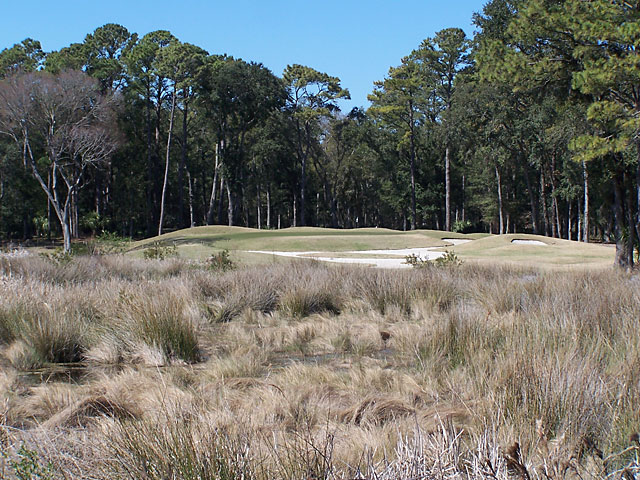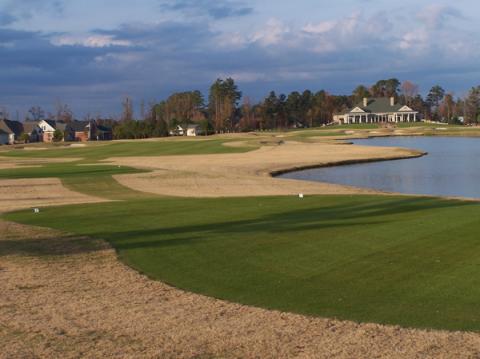The Rees Jones course at Haig Point plays to 29 holes, the extra two providing two alternate par 3 routings.
Haig Point on Daufuskie Island, SC, is one of the most peaceful communities I have visited, and it includes a terrific 29 holes of Rees Jones marshland golf, first built in 1986 and renovated last year. The 29-hole layout includes two additional par 3s where members have a choice of straight-on shots or carries over the marsh.
Coastal property prices had remained pretty steady through the first few months of the housing crisis. Living within Frisbee-throwing distance of a beach is a turn-on for those who can afford the privilege, but now even in prized coastal properties like Haig Point, inventories are up and, consequently, prices are dropping.
Still, $7,900 for a wooded lot in Haig Point, even a small one, was a surprise. How could that be?
After doing some research, it seems the low price is a function of
Those who had already built the few homes in Haig Point under the IP plan were offered the unsold lots at ridiculously low prices. One local agent told me they basically "gave them away." The $7,900 lot is a remnant of that time.
I won't belabor the obvious point that the housing crisis is having a savaging effect on prices across all manner of properties. Beautiful and peaceful though it may be, Daufuskie's isolation appeals only to a small niche of intrepid souls. And whereas people commute via frequent ferry service from the islands that dot Puget Sound to Seattle, the ferry from Haig Point travels to Hilton Head, not exactly an urban business center. Residents of Haig Point, therefore, tend to be those relatively few who willingly trade modern and convenient services for splendid isolation. That is not a broad market.
Three modern high-speed ferries run between Haig Point and Hilton Head. They are expensive to maintain, and when you throw in the golf course
What of the home one might build on this bargain-priced lot? Because you cannot get labor or construction materials onto the island without using the ferry or a helicopter, construction costs are among the highest anywhere, an estimated $400 to $500 per square foot. That modest cottage, say 2,000 square feet, could approach $1 million in costs. By way of comparison, a 3 BR, 3 ½ BA Craftsman style cottage at Haig Point that overlooks the 10th fairway is on the market currently for just $489,900, golf membership included. And there are plenty of other bargains just like it.
If you are interested in property at Haig Point, let me know and I can put you in touch with an agent who knows the island well. While visiting, be sure to check out the Daufuskie Island Resort and its two outstanding 18-hole courses, one an early Jack Nicklaus design and the other by Tom Weiskopf and Jay Moorish.





 New Bern, NC, is a "small town gem," and the local community of Taberna's golf course shows polish of its own.
New Bern, NC, is a "small town gem," and the local community of Taberna's golf course shows polish of its own.



















